Search the Special Collections and Archives Portal
Search Results
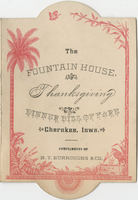
Thanksgiving dinner menu, Fountain House
Date
1870 to 1933
Archival Collection
Description
Note: No date on menu. "Dinner served from 1 to 2 o'clock p. m., $2.00 per couple"--p. 4. "Compliments of N. T. Burroughs & Co."--cover. Nelson T. Burroughs was president of the First National Bank in Cherokee, Iowa. Semi-circle shape die-cut on top and bottom of menu Restaurant: Fountain House Location: Cherokee, Iowa, United States
Text
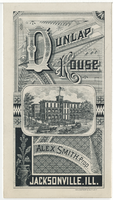
Menu for Opening of Jacksonville Southeastern Rail Road to Centralia, Wednesday, November 7, 1883, Dunlap House
Date
1883-11-07
Archival Collection
Description
Note: Excursion souvenir. Quote on menu, "Now good digestion wait on appetite and health on both." Menu insert: Quotations Restaurant: The Dunlap House Location: Jacksonville, Illinois, United States
Text
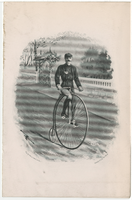
Hotel Brunswick dinner menu, Sunday, October 21, 1883
Date
1883-10-21
Archival Collection
Description
Note: Illustration on front cover engraved by John A. Lowell & Co., Boston, U.S.A., no. 61A. For wine cards apply to waiters. All articles ordered not on the Bill of Fare will be charged extra. Fruit or Dessert taken from the table will be charged extra. Location of restaurant handwritten near name of proprietor Restaurant: Hotel Brunswick Location: Titusville, Pennsylvania, United States
Text
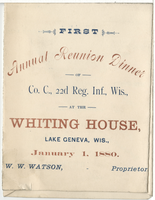
Menu for the First Annual Reunion Dinner of Company C., 22d Regiment Infantry, Wisconsin, January 1, 1880, Whiting House
Date
1880-01-01
Archival Collection
Description
Note: Menu flaps state, Mustered in and organized Sept. 1st, 1862. Mustered out and discharged June 12th, 1865. Menu unfolds into a ten-sided shape Restaurant: Whiting House Location: Lake Geneva, Wisconsin, United States
Text
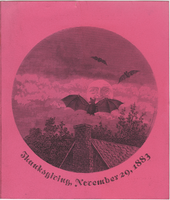
Thanksgiving dinner menu, November 29, 1883, St. James Hotel
Date
1883-11-29
Archival Collection
Description
Note: Menu in French and English. Menu bright pink in color. Circular illustration on front cover, copyright by Robinson Eng. Co., Boston, 1881, no. 141. Poem by Owen Meredith on back cover Menu insert: Poems Restaurant: St. James Hotel (Bradford, Pa.) Location: Bradford, Pennsylvania, United States
Text

Thanksgiving menu, Metropolitan Hotel
Date
1870 to 1933
Archival Collection
Description
Note: No date on menu. Inside of menu signed, Complts of J. T. Ford Restaurant: Metropolitan Hotel (St. Paul, Minn.) Location: St. Paul, Minnesota, United States
Text
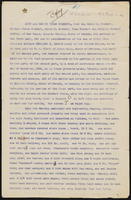
Stewart family real estate documents
Date
1900 to 1909
Archival Collection
Description
Stewart family real estate documents
Text

Slide of the old stamp mill, circa 1950s
Date
1950 to 1959
Archival Collection
Description
The old stamp mill, location unknown. A stamp mill (or stamp battery or stamping mill) is a type of mill machine that crushes material by pounding rather than grinding, either for further processing or for extraction of metallic ores. Breaking material down is a type of unit operation. A stamp mill consists of a set of heavy steel (iron-shod wood in some cases) stamps, loosely held vertically in a frame, in which the stamps can slide up and down. They are lifted by cams on a horizontal rotating shaft. On modern mills, the cam is arranged to lift the stamp from the side, so that it causes the stamp to rotate. This evens the wear on the shoe at the foot of the stamp. As the cam moves from under the stamp, the stamp falls onto the ore below, crushing the rock, and the lifting process is repeated at the next pass of the cam. Each one frame and stamp set is sometimes called a "battery" or, confusingly, a "stamp" and mills are sometimes categorized by how many stamps they have, i.e. a "10 stamp mill" has 10 sets. They usually are arranged linearly, but when a mill is enlarged, a new line of them may be constructed rather than extending the line. Abandoned mill sites (as documented by industrial archaeologists) will usually have linear rows of foundation sets as their most prominent visible feature as the overall apparatus can exceed 20 feet in height, requiring large foundations. Stamps are usually arranged in sets of five. Some ore processing applications used large quantities of water so some stamp mills are located near natural or artificial bodies of water. For example, the Redridge Steel Dam was built to supply stamp mills with process water.
Image
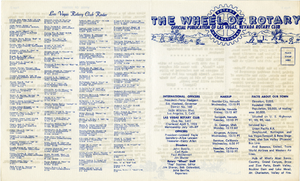
The Wheel of Rotary Las Vegas Rotary Club newsletter, November 23, 1949
Date
1949-11-23
Archival Collection
Description
Newsletter issued by the Las Vegas Rotary Club
Text
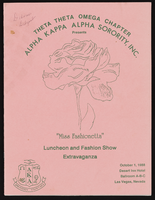
Alpha Kappa Alpha Sorority, Theta Theta Omega Chapter "Miss Fashionetta souvenier journal
Date
1988-06-24
Archival Collection
Description
From the Alpha Kappa Alpha Sorority, Incorporated, Theta Theta Omega Chapter Records (MS-01014) -- Chapter records file.
Text
Pagination
Refine my results
Content Type
Creator or Contributor
Subject
Archival Collection
Digital Project
Resource Type
Year
Material Type
Place
Language
Records Classification
